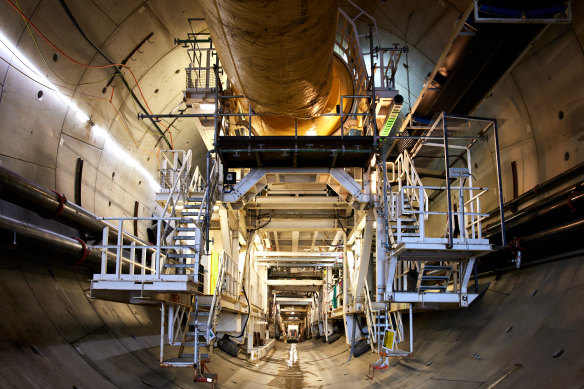After the tourists go home, a museum’s collection tells its own story
- Losses have at least quadrupled over the last five years, from $2.7 billion to $103 billion
- Estimate real annual losses to romance scams at $200 billion
- Massive increase in victims 20 and under
- Most common apps used were Facebook, Google Hangouts, WhatsApp; Instagram and Plenty of Fish
- State by state breakdown
- 371 arrested; losses of $836 million
- Many, or most, cases involved PPP fraud or unemployment fraud
FBI identifies crypto accounts containing more than $40 million stolen by North Korea
Australia arrests Chinese man involved in scam that took $100 from US victims in crypto romance scams
Review and Recommendation: I highly recommend To Rule the Waves, by Arthur Herman. A great history of the Royal Navy, how it developed and enriched the world by making the sea lanes safe for everyone. And ended the transatlantic slave trade.
Fraud Studies: Here are links to the studies I’ve written for the Better Business Bureau: puppy fraud, romance fraud; BEC fraud, sweepstakes/lottery fraud, tech support fraud, romance fraud money mules, crooked movers, government imposters, online vehicle sale scams, rental fraud, gift cards, free trial offer frauds, job scams, online shopping fraud, fake check fraudand crypto scams
Fraud News Around the world
- In depth look at “We buy Ugly homes” and why it works
- In depth UK report on pension scams, which have increased dramatically there
- Guam: Group that ran inheritance scam sentenced to prison; Nigerian head of gang gets 45 months prison; others get 33, 36 and 48 months; sent mailings to elderly in Guam saying they had inherited but needed to pay fees to get money; part of the money went back to Nigeria; got $2.6 million
- Fake reviews are now being done by AI, and some AI may be able to detect them
- In two week effort Singapore police investigate 348 scammers and money mules
- New York City cracks down on street vendors selling counterfeit goods; seize items valued at $30 million; arrest 8 vendors
- Spain is the third most hacked country; incidents have doubled since last year
- Nigeria: EFCC arrests 28 for internet fraud
- India arrests man in massive Amazon return fraud; ordered iPhones and other expensive items and claimed he had returned them; got refunds despite no real returns
- FTC says some gift card companies will freeze money on the card – if you move fast
- Thailand: Police arrest Nigerian man who was teaching scams to kids
- North Carolina police trace fake check overpayment scheme on Marketplace to Nigeria
- Iowa man charged with money laundering; kept helping scammers after warning
- Czech Republic sees online crime double; set up new cyber crime unit
- Fake Amazon ad that appears in google search causes popups that freeze brower and provide phone number of tech support scam
- Taiwan arrests 30 who were pretending to be Chinese security officials in calls to China and demanding money
- Rhode Island: Lawyer pleads guilty to operating Ponzi scheme
- Event ticket frauds on the rise this summer – how they work
- Man in Georgia arrested for stealing his neighbors front porch
- Couple caught having sex on ride at Disneyland
- CFPB gets agreed order against Freedom Mortgage and Realty Connect; allege companies gave kickbacks for mortgage referral
- FTC gets injunction against California-based company that claimed it could resolve student loan debt
- The FTC is sending more than $9 million in refunds to victims of student loan scam
- The FTC gets Court to shut down online business opportunity fraud that claimed victims could use AI to make money in online stores; alleges $22 million lost
- CFPB sues high cost personal loan conglomerate with pressing victims to refinance and get deeper in debt
- Georgia: Man gets 21 months prison for PPP and EIDL fraud; got $500,000; previous conviction for mortgage fraud
- Denver: Woman gets four years prison for PPP fraud; got $3.3 million
- South Carolina: Postal letter carrier gets more than three years prison for PPP fraud; made up fake businesses; got millions
- Seattle: Nigerian man extradited from Germany for identity theft and fake applications for unemployment benefits in 25 states; got $2.3 million; also stolen identity refund fraud
- Two former Chicago cops charged with PPP fraud; got more than $2 million
- Florida: Man charged with PPP fraud; got $500,000
- Tennessee: Man gets 40 months prison for PPP fraud; got $308,000
- New Facebook scam sends messages to victims asking them to “reverify” their account; steal credentials
- Thailand threatens to shut down Facebook for not doing enough to screen fraud ads
- Attack on Tennessee school
- Ransomware groups are going after managed service providers that provide technical services for thousands of small/medium businesses
- Attack on Seiko in Japan
- Hits two cloud storage companies in Denmark, who say they’ve lost most customer data
- Jamaica: Woman arrested for lottery fraud with help from HSI agents
- Jamaica: Guns seize during raid for lottery fraud
- AARP article on romance/crypto investment scams
- Examination of how Rhode Island man set up and operated an operation to launder money from romance scam victims; handled $35 million; first to bank accounts in the US and then quickly to other countries
- Jury acquits Texas man who was caught with 7kg of meth at airport he didn’t know he had; victim of lottery scam





